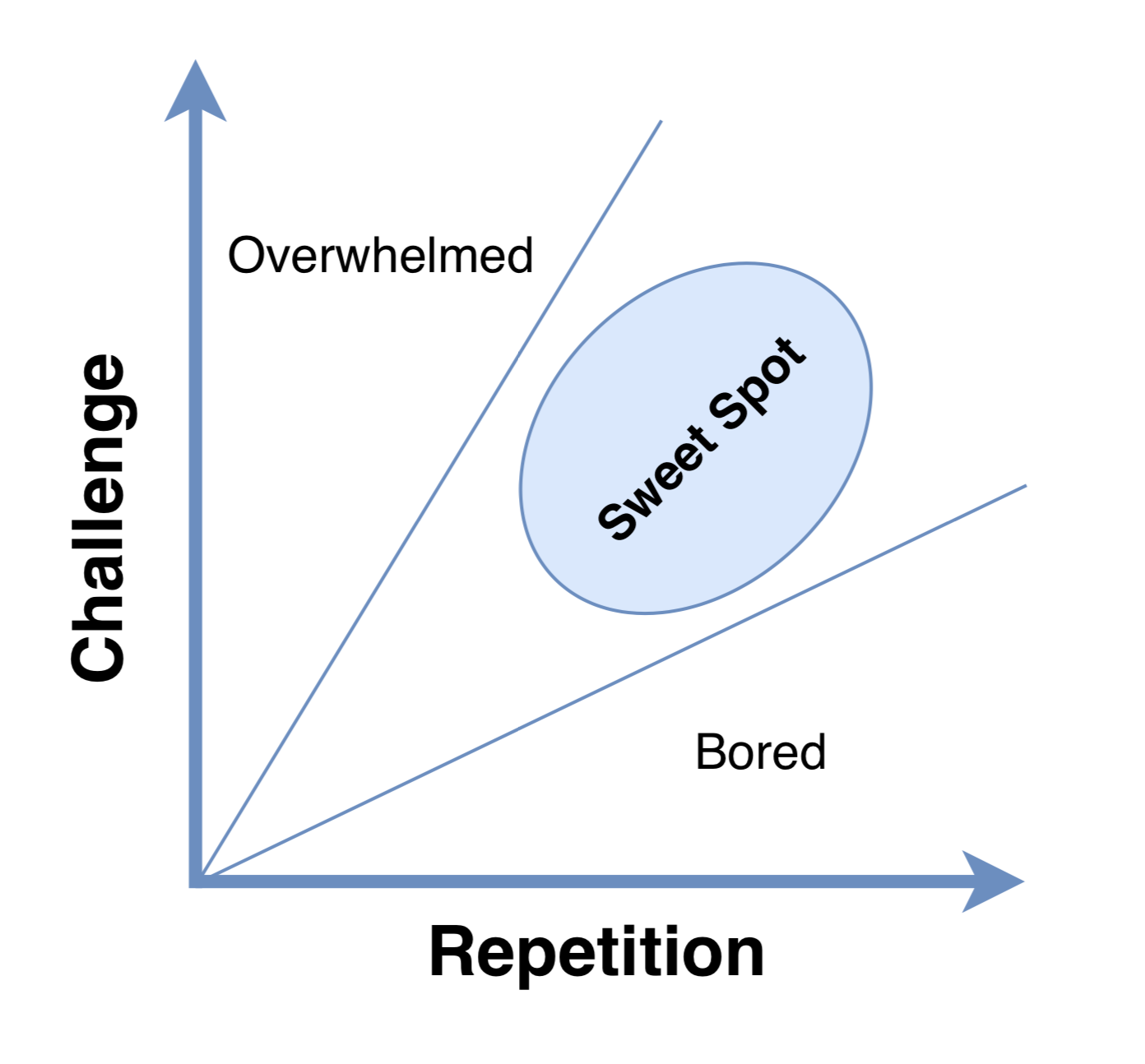| The Denbigh teaching and learning model. |
What do these concepts mean? In the upcoming blogs each of these concepts will be unpicked, hopefully to arouse your thinking about a model, which at first look, may not seem very interesting at all.
What is Challenge?
Challenge is the antithesis of ease. For most of our students they want ease. It is easier. Though remaining in a state of ease does eventually lead to boredom as stagnation occurs making students irritable. This is not fun for anyone. Therefore we want to introduce challenge - something to put students to the test, to make them think. However, if this challenge is not carefully planned and is too difficult they will become overwhelmed, leading to further irritability. So too little and too much challenge can be a problem and could affect student mindsets - therefore we need to find the sweet spot that is just challenging enough.
 |
| Classrooms tasks should be a balance of lower challenge repetition and rehearsal of knowledge and skills as well as more cognitively demanding tasks that apply knowledge. |
Finding the sweet spot of challenge
Finding this sweet spot is obviously a delicate task. It largely relies on a teacher's knowledge of any group of learners they teach, their strengths and weaknesses, as well as the content they are aiming to deliver. Below are a few generic tips to help find that sweet spot.
- Teach to the top - One way sure to fail to find the sweet spot is by pitching your lessons to the middle (or lower). Straight away your more able learners will find things too easy or boring and your other learners will not even realise what they are capable of as you have put a ceiling on what they can achieve.
- Don't bolt on challenge - Never make challenge an addition that is task based (when you have completed this task, do the 'challenge' task). For a start this is unfair, it punishes success and it also links challenge to extra work, which should not be the case. Challenge should be equitable. As with teaching to the top, generally speaking, all learners should attempt the same task(s) and if there are learners who need scaffolding to achieve a task; provide it - don't deny them the opportunity to give it a go.
- No to differentiated objectives - Throw away those differentiated learning objectives (some, most, all). All these objectives encourage is the thought that 'if only some need to do it then I don't have to). Teachers need to inspire students to believe that they can do it all.
What does challenge look like in the classroom?
A class that has been challenged is one that is engaged in processing knowledge. If they are getting a lecture of new knowledge and are all attentively listening and perhaps asking questions - they are being challenged. If they are engaged in recall tasks/retrieval practice, they are being challenged. If they are discussing knowledge, they are being challenged. A class that is not challenged will not be thinking about the knowledge they are acquiring or have acquired. In short, a challenged class is one where students are motivated to engage with the knowledge and skills they are being taught. Obviously some lessons may have more 'challenging' cognitively loaded tasks than others, however that would not be every lesson - what we are always looking for is consistency of challenge over time.
The fear of challenge
To too many challenge is scary. The reason why it is scary is not because we fear the effort involved, rather it is because we fear the change that the challenge may have in altering our perception of the world around us. We all know the expression 'ignorance is bliss'. Many people like to remain unchallenged as it maintains their blissful ignorance. Many of our students are like this. They would rather deny the opportunity to improve their knowledge base out of fear of losing their blissful ignorance and the safety this provides. Take a look at the image below.
As teachers, we have to recognise that challenge will cause some emotional distress to young learners. However, our role as teachers (to some extent) is to knock our students down a peg or two (into the insecure canyon) and take them out of their comfort zone. We do this for the sole purpose of building them back up again on a more solid foundation of knowledge. A teacher sets this challenge by having high expectations - consistently expecting the best.
This is not going to be an easy journey, it will be a tough one, and there will be points in the relationships we have with our learners where they may not like us. Yet ultimately, at the end of the journey they will be glad for the challenge we gave them. The worst thing we could do as a collective school is let students leave our care with the conviction of a child.
Ian Stonnell @DenbighCPD
Further reading
No comments:
Post a Comment